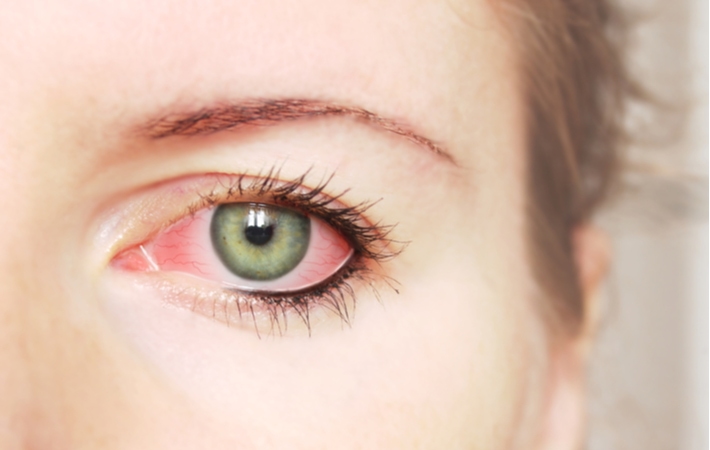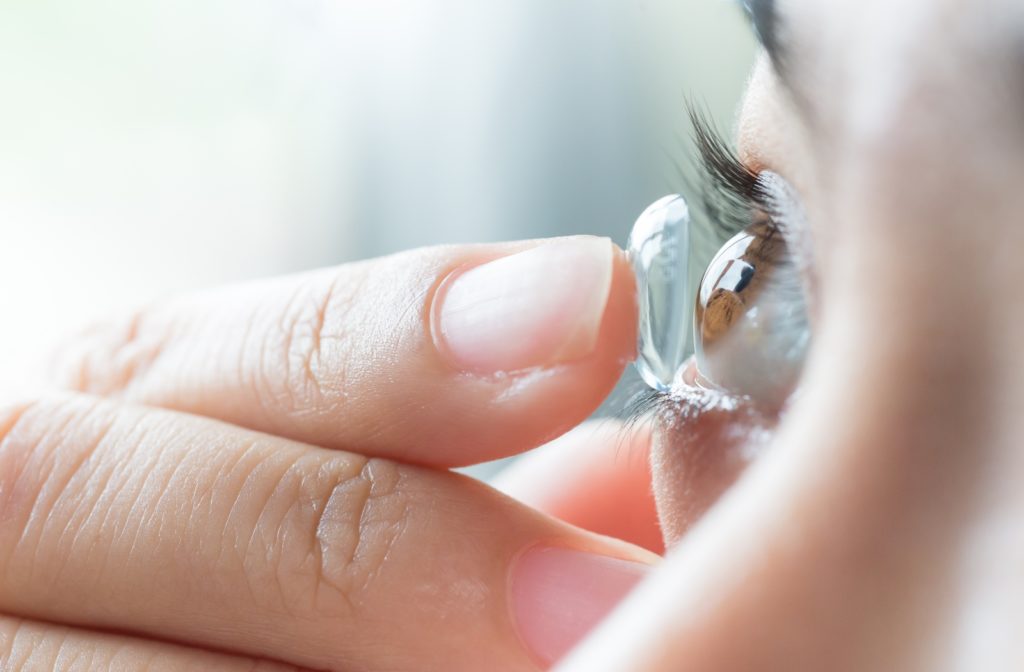Dry Eye Effects Contact Lenses Comfort
Wearing contact lenses can be a convenient alternative to eyeglasses. When your contacts fit your eyes, they move with your eye, allowing more natural vision that doesn’t get in the way of physical activities. However, contact lenses require more care and can increase the risk of eye conditions, including dry eye.
Dry eye is an uncomfortable experience and can be aggravated by wearing your contact lenses. Whether you wear your contacts occasionally or every day, dry eye can make you think twice about putting in your contact lenses. Yet, dry eye therapy options can help treat eye discomfort and vision problems. So can people with dry eyes wear contacts?
What Is Dry Eye?
Dry eye is an eye condition affecting tear quality or quantity. Tears are essential for lubricating, cleaning, and nourishing the eye. The occasionally dry eye can result from temporary factors, like a dry breeze or not drinking enough water. Unfortunately, dry eye is often a chronic condition and can have multiple causes.
Common symptoms of dry eye include:
- Blurry vision
- Burning or scratchy eyes
- Light sensitivity
- Redness
- Stringy mucus
- Watery eyes
When dry eye goes untreated, it can lead to complications affecting sight and eye health, including an increased risk of infection or cornea scarring. Over time, dry eye may also cause corneal erosion—thinning eye surface—or vision loss.
Tear quality and quantity can be affected by multiple factors, including meibomian gland dysfunction (MGD), blepharitis, and medications. It can also be a side effect of refractive eye surgery or long-term contact lens wear.
Contact Lens Types
Chronic dry eye affects about 50% of contact lens wearers. Discussing your symptoms can help your optometrists treat your dry eye and improve eye comfort. You may be able to continue wearing your regular contact lenses, or you may benefit from a change.
Some contact lenses are better for chronic dry eyes. Lens material and size can impact how effectively your eye surface receives or maintains lubrication.
Soft Lenses
Soft contact lenses are made of soft, flexible plastics. The material can be easier to adjust to and comfortably allows irregular wear. Notably, newer silicone hydrogel soft contacts increase how much oxygen reaches your eye, reducing the risk of hypoxia.
Hydrogel lenses contain water, which means they can dry out when there isn’t enough moisture. Lenses with higher water content are more likely to cause dry eye than lenses with low water content. Although higher water content may initially improve eye mixture, they can dry out faster. Dry soft lenses are uncomfortable to wear and can tear more easily.
Alternatively, silicone hydrogels reduce evaporation. As a result, the lenses retain moisture better, which can be more comfortable for dry eyes.
Another problem affecting eye comfort is protein deposits. Soft contact lenses are more prone to buildup on the lenses, increasing the risk of infection and eye irritation. Over time, the deposits can also decrease the effectiveness of the lens, resulting in poorer vision quality.
Cleaning your lenses can remove some protein, but you may need a protein remover to reduce buildup effectively. Disposable soft lenses can also benefit dry eyes, as there’s less risk of irritation due to protein deposits.

RGP Lenses
Rigid gas permeable (RGP), sometimes referred to as “hard” contact lenses, are more durable and generally provide clearer vision. Additionally, RGPs are resistant to deposit buildup and can be easier to handle (compared to soft contacts).
RGP lenses can initially be less comfortable and require consistent wear to maintain long-term comfort. Some people with dry eyes can benefit from switching to RGP lenses, as they can stimulate tear production. However, if the problem is tear quality (not quantity), you may require additional treatment to improve dry eye symptoms.
Scleral Contact Lenses
Scleral contact lenses are rigid gas permeable (RGP) but with an alternative size and design. Scleral lenses vault over the cornea, with the weight of the lens resting on the sclera (white of the eye), which is much less sensitive than the cornea.
The shape creates a fluid collection, preventing the eye surface from drying out. As scleral lenses are custom-fitted, even people with irregular corneas can benefit from scleral lenses.
Scleral lenses also promote healing of the ocular surface with a design that improves the eye’s access to oxygen and moisture. It also prevents exterior irritants, such as dust or debris, from reaching the eye.
Changing Your Solution
Your contact lens cleaning solution is a possible cause of dry eye. The preservatives in some solutions can irritate the eye, leading to dryness. It’s also possible to develop an allergic reaction or sensitivity. However, the symptoms can sometimes be delayed or occur in patients with no previous history of sensitivity to a contact lens cleaning solution.
Check that you’re using the correct type of solution for your contact lens type. The interaction between lens material and solutions can affect disinfection. Additionally, keep in mind cleaning solutions have expiry dates, typically 90 days after opening (or 24 hours for preservative-free solutions).
Changing your contact lens solution may reduce symptoms of dry eye. Your optometrist may also have tips about caring for your lenses to improve eye comfort and health.
Contact Us for Dry Eye Contacts
Many people with dry eye can still wear contacts. However, you may benefit from dry eye therapy, changing your contact lens type, or trying a brand better for dry eyes. Our team at Eye Care Plus is dedicated to providing high-quality care and honest advice. We can help you with solutions for comfortable, healthy vision.
Book an appointment with an Amarillo optometrist at Eye Care Plus today.




